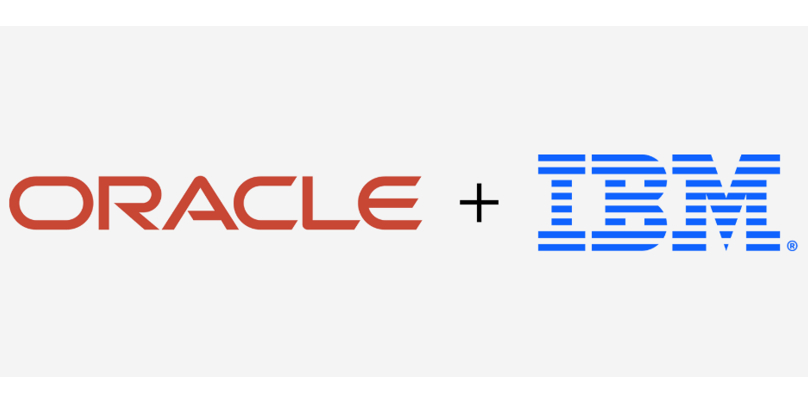Enterprise AI Infrastructure: The Race to 2025
IBM, Oracle, and Nvidia are racing to scale enterprise AI infrastructure by 2025, leveraging cloud, AI hardware, and software ecosystems to capture the market.

Industry Context and Competitive Landscape
The global enterprise AI market is experiencing a significant surge as companies increasingly demand massive computational power to train and deploy generative AI models and other advanced machine learning applications. Key players like IBM, Oracle, and Nvidia are investing billions to meet this need by expanding AI infrastructure capabilities. This includes high-performance GPU clusters, hybrid cloud offerings, and AI lifecycle management tools.
Oracle recently made headlines with a reported multibillion-dollar deal with OpenAI, estimated at up to $300 billion over five years. This deal signals a massive commitment to AI compute infrastructure, focusing on building large-scale GPU superclusters optimized for training next-generation foundational models beyond GPT-4. Oracle Cloud Infrastructure (OCI) emphasizes a database-first strategy, delivering specialized hardware tuned for Oracle workloads and multicloud interoperability that reduces latency and costs across cloud environments.
Nvidia remains the undisputed leader in AI hardware, powering many generative AI models with its cutting-edge GPUs like the H100 and the upcoming Blackwell series. Nvidia bundles these GPUs with networking and software optimizations in its DGX systems to maximize throughput and utilization. In 2025, Nvidia announced a $100 billion investment in OpenAI, underscoring its strategic role in supplying AI compute power at scale. Nvidia’s GPUs are integrated not only in its own cloud offerings but also widely available on platforms like Google Cloud and Microsoft Azure, enabling enterprises to train and deploy AI models with flexibility and speed.
IBM, meanwhile, is focusing on hybrid cloud and regulated industries, leveraging its Watsonx platform to offer AI lifecycle management, governance, and deployment tools across on-premises and cloud environments. IBM Cloud specializes in integrating AI with enterprise data and compliance requirements, targeting heavily regulated sectors such as finance and healthcare. Additionally, IBM is advancing quantum computing applications for real-world use cases, which could become synergistic with AI workloads in the future. IBM projects at least 5% revenue growth in 2025 driven largely by AI and cloud services, reflecting growing demand for their hybrid AI solutions.
Key Features and Differentiators
| Company | Core Strengths | AI Infrastructure Focus | Market Strategy |
|---|---|---|---|
| Oracle | Database-first cloud, AI superclusters, multicloud interoperability | Massive GPU clusters optimized for Oracle databases, low latency cloud integration | Large-scale AI deals (e.g., OpenAI), targeting heavy AI training workloads and hybrid multicloud environments |
| Nvidia | Industry-leading AI GPUs, DGX AI systems, software stack for AI optimization | Cutting-edge GPUs (H100, B100, Blackwell), data center AI hardware, AI cloud partnerships | Strategic investments in AI startups, dominant GPU supplier, enabling generative AI and HPC workloads across clouds |
| IBM | Hybrid cloud AI, governance, AI lifecycle management, quantum computing | Watsonx AI platform, hybrid and regulated industry deployments, quantum-complemented analytics | Focus on enterprise AI adoption in regulated sectors, integrating AI with existing enterprise data and compliance needs |
Oracle’s OCI is notable for its Autonomous Database and bare-metal HPC options, delivering cost-effective, high-performance AI training clusters with optimized hardware tuning. OCI’s multicloud strategy enables Oracle databases and AI workloads to run seamlessly across different cloud providers, reducing data egress costs and latency.
Nvidia’s DGX Cloud and GPU offerings are widely regarded as the gold standard for AI training. The H100 GPU, with features like tensor cores and NVLink interconnects, enables high-throughput parallel processing essential for large language models and complex AI workloads. Nvidia’s software ecosystem complements its hardware, providing AI frameworks and orchestration tools that maximize efficiency.
IBM’s Watsonx platform offers tools for building, governing, and deploying AI models in hybrid and multicloud environments, with an emphasis on data governance and compliance. This is a critical advantage for industries with strict regulatory requirements. IBM also pairs AI with quantum computing research, demonstrated by HSBC’s use of IBM quantum computers to improve bond trading predictions by 34%, signaling IBM’s long-term investment in next-gen computing technologies.
Market Impact and Future Outlook
The race to scale enterprise AI infrastructure is reshaping cloud and hardware markets. Oracle’s massive AI deal with OpenAI could set a precedent for multibillion-dollar, multi-year AI infrastructure contracts covering GPU capacity, silicon supply, and cloud services. Nvidia’s continued dominance in GPU hardware ensures it remains the cornerstone supplier for AI training worldwide, while IBM’s hybrid and regulated industry focus fills a critical niche for enterprise adoption where compliance and integration are paramount.
These developments reflect a broader trend: AI infrastructure is no longer a niche concern but a strategic imperative that requires deep integration of hardware, software, and cloud services. Enterprises demand scalable, performant, and compliant AI solutions, driving cloud providers and hardware makers to innovate rapidly.
Looking ahead, the combination of specialized AI hardware, multicloud strategies, hybrid deployment models, and emerging quantum capabilities will define the competitive landscape. The players that can deliver seamless, cost-effective AI infrastructure at scale while addressing enterprise governance and data needs will dominate this transformative market.
In summary, IBM, Oracle, and Nvidia are not just competing—they are collectively advancing the frontier of enterprise AI, fueling the next wave of innovation and adoption across industries worldwide.



